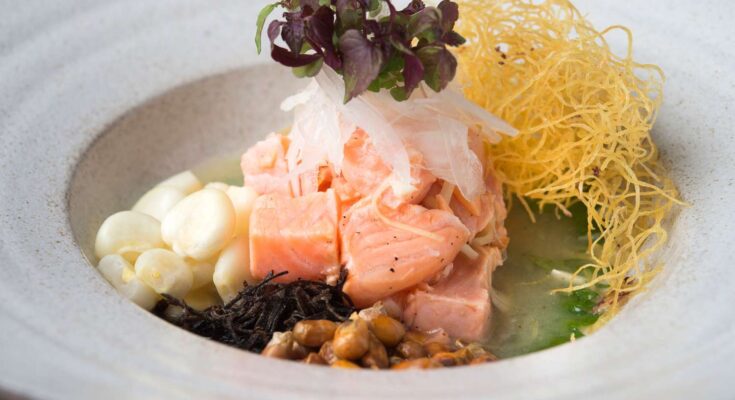Nikkei cuisine is a culinary gem born from the fusion of Japanese and Peruvian flavors, representing a harmonious blend of two distinct culinary traditions. Emerging from the immigrant communities of Japanese descent in Peru, Nikkei food embodies a unique culinary journey that intertwines the delicate simplicity of Japanese dishes with the bold and vibrant ingredients of Peruvian gastronomy. In this article, we embark on a flavorful exploration of Nikkei cuisine, unraveling its history, key ingredients, and the cultural significance it holds on the global culinary stage.
A Historical Blend: The roots of Nikkei cuisine trace back to the late 19th century when Japanese immigrants arrived in Peru to work in sugarcane plantations and railway construction. These immigrants brought along their culinary traditions, including ingredients like soy sauce, rice, and seafood, which formed the foundation of Nikkei cuisine. Over time, Japanese immigrants began integrating local Peruvian ingredients such as aji peppers, potatoes, and corn into their dishes, giving birth to a culinary fusion that would eventually captivate palates worldwide.
Key Ingredients and Flavor Profiles: Central to Nikkei cuisine are its key ingredients, which combine the best of both Japanese and Peruvian culinary worlds. Seafood plays a prominent role, with fresh fish like tuna, salmon, and sea bass often featured in dishes such as ceviche, tiradito (Peruvian sashimi), and sushi rolls infused with Peruvian flavors like lime, cilantro, and chili peppers. Soy sauce, mirin, and miso add depth and umami richness to dishes, while Peruvian staples like quinoa, sweet potatoes, and yuca contribute texture and earthy sweetness.
One hallmark of Nikkei cuisine is its vibrant and diverse flavor profiles. Dishes are often characterized by a delicate balance of sweet, sour, spicy, and umami flavors, creating a sensory experience that is both complex and satisfying. For example, the popular dish “tiradito” combines thinly sliced raw fish with a tangy citrus marinade, chili peppers, and Japanese-style seasoning, resulting in a harmonious explosion of flavors that dance on the palate.
Cultural Significance and Global Influence: Nikkei cuisine holds significant cultural importance as it embodies the shared history and heritage of Japanese and Peruvian communities. It serves as a testament to the resilience and creativity of immigrants who adapted their culinary traditions to new environments while preserving their cultural identity. In recent years, Nikkei cuisine has gained widespread acclaim on the global culinary stage, with restaurants serving Nikkei-inspired dishes popping up in major cities around the world.
Beyond its cultural significance, Nikkei cuisine has also influenced the broader culinary landscape, inspiring chefs to experiment with cross-cultural flavor combinations and techniques. Its popularity has led to a greater appreciation for Latin American and Asian cuisines, fostering culinary diversity and innovation in the process.
Conclusion: Nikkei cuisine stands as a testament to the power of culinary fusion, blending the best of Japanese and Peruvian culinary traditions to create a truly unique and flavorful dining experience. With its rich history, diverse ingredients, and vibrant flavor profiles, Nikkei cuisine continues to captivate food enthusiasts worldwide, offering a delicious celebration of cultural diversity and culinary creativity on the plate.



